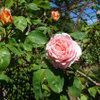anyone grown the thornless R. wichuraiana?
davidrt28 (zone 7)
9 years ago
Related Stories

GARDENING GUIDESGreat Design Plant: Rosa Banksiae a Low-Maintenance Beauty
This thornless, disease- and insect-resistant rose brings showers of white or yellow flowers to the spring garden
Full Story
GARDENING GUIDESWhat Kind of Roses Should You Grow?
Want to add the beauty of roses to your garden? Find out which ones, from old-fashioned to modern, are right for you
Full Story
SPRING GARDENINGTop 10 Scented Plants for Your Garden
A palette of perfumed plants can transform even the smallest of gardens into a sensory delight
Full StoryMore Discussions









User
davidrt28 (zone 7)Original Author
Related Professionals
Manorville Landscape Architects & Landscape Designers · Mountain Brook Landscape Architects & Landscape Designers · Roosevelt Landscape Architects & Landscape Designers · South Elgin Landscape Architects & Landscape Designers · Elgin Landscape Contractors · Chesapeake Ranch Estates Landscape Contractors · Cupertino Landscape Contractors · Newberg Landscape Contractors · North Plainfield Landscape Contractors · Quincy Landscape Contractors · Seymour Landscape Contractors · Shirley Landscape Contractors · Siloam Springs Landscape Contractors · Phoenix Swimming Pool Builders · Providence Siding & Exteriorsportlandmysteryrose
roseseek
User
davidrt28 (zone 7)Original Author
roseseek